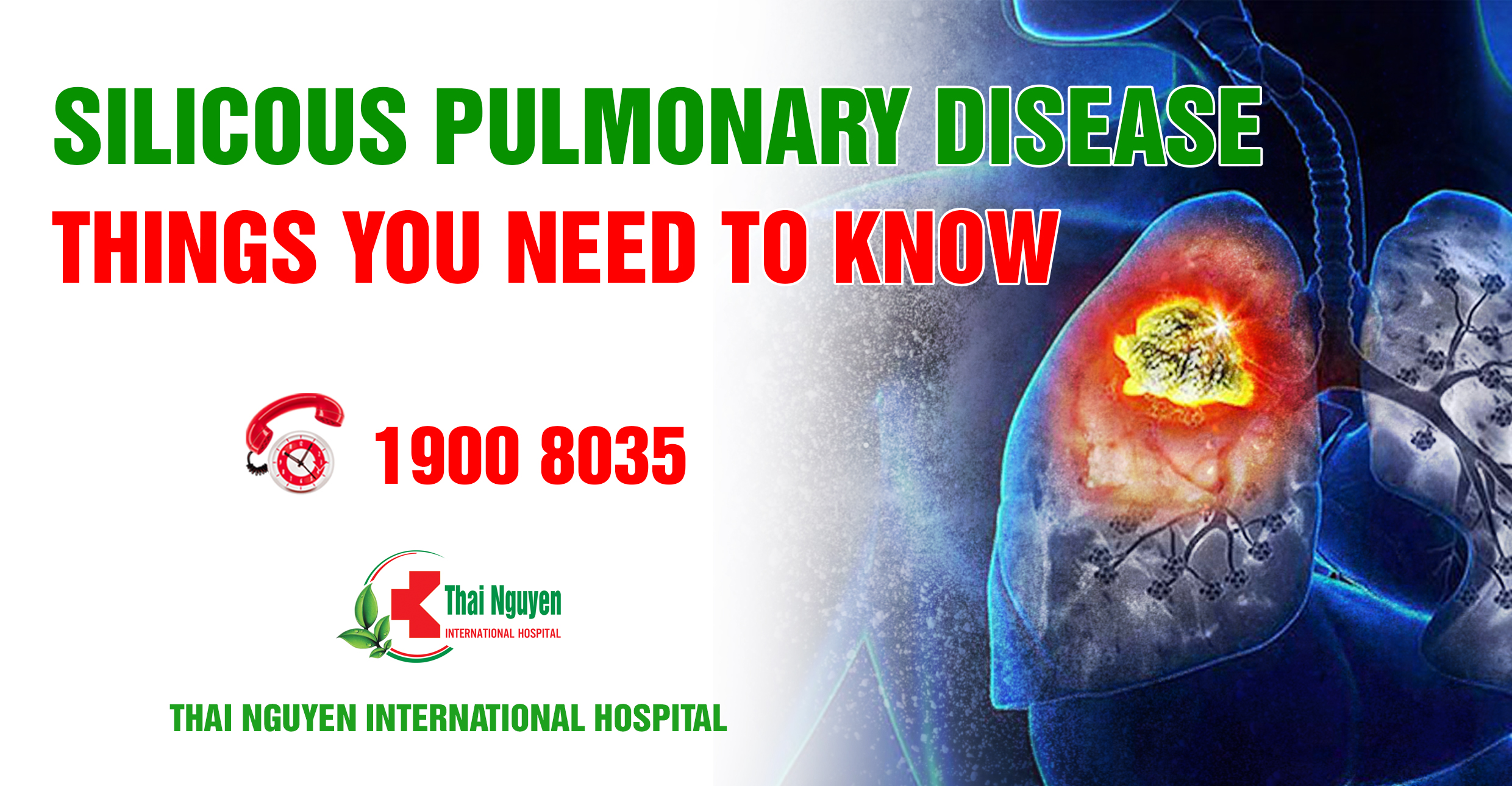Customer Care
Emergency
Customer Care
Emergency
This article has the professional consultation of Central Committee.BSCC. Doctor of medicine specializing in occupational diseases Nguyen Phuc Thai
Recently, the case of many workers contracting and dying from Silicosis in Nghe An province is a warning bell about the risk of disease in production facilities. Silicosis is caused by inhaling silica dust in the working environment, causing damage to the respiratory system and risk of death. Therefore, those who work in environments containing silica dust need to clearly understand the causes, symptoms, and prevention methods to avoid contracting this disease.

Silica dust is dust with a free silicon content of over 5%, the higher the silicon content, the greater the risk of suffering from silica pneumoconiosis. Dusts with high silicon content such as quartz, sand, granite, samor (heat-resistant additive), tripoli (glass and metal polishing material…)
Occupational silica pneumoconiosis is a progressive lung fibrosis caused by inhaling dust containing free silica during work. In Vietnam, occupational silica pneumoconiosis is 1/35 occupational diseases eligible for social insurance.
– Acute: This type of disease develops after a few weeks to several years of direct contact with silica dust. The disease progresses rapidly with the lungs becoming very inflamed and filled with fluid, causing severe difficulty breathing, causing low levels of oxygen in the blood.
– Chronic: This is the most common form of chronic silicosis, occurring after a long period of time (10 – 30 years) of direct exposure to silica dust (low concentration of silica). The patient shows no signs of the disease, although the infection can be detected through X-rays. The most characteristic manifestation of this disease is that silica dust causes swelling of the lungs and lymph nodes in the chest, making it more difficult for the patient to breathe. X-ray results also showed lesions less than 10mm in diameter in the upper lung.
– Progressive disease: The result of exposure to silica dust at high concentrations continuously for about 5 – 10 years. Accordingly, patients with pulmonary fibrosis also develop other symptoms more quickly than those with chronic disease. These patients are at increased risk of developing future complications such as progressive massive fibrosis.
The condition can become severe if the patient has other lung diseases such as fungal infections, tuberculosis, non-tuberculous mycobacterial infections and lung cancer.
*Professions that are susceptible to silica pneumoconiosis:
* Clinical manifestations of Silicosis:
* To prevent Silicosis, it is necessary to apply the following measures:
Come to Thai Nguyen International Hospital for early detection of silicosis:
Based on clinical signs, an occupational disease specialist will thoroughly examine and prescribe diagnostic tests to determine whether the customer has silica dust disease or not, and if so, to what extent. :
– Lung imaging diagnosis: Chest X-ray or lung CT will help doctors more clearly observe lung images, thereby assessing the extent of lung damage as well as determining whether or not there is disease.
– Measuring respiratory function.
– Sputum test to determine other related diseases (Pulmonary tuberculosis).
Thai Nguyen International Hospital – a reputable medical address providing services





Acute conjunctivitis is one of the common eye diseases during the change of seasons. The disease causes discomfort for patients and has...
Laparoscopic surgery for peritonitis due to ruptured appendicitis is evaluated as safe, effective, and minimizes post-operative complications. Thai Nguyen International Hospital with: – A...
On May 6, 2024, Thai Nguyen International Hospital Joint Stock Company (TNH) had a working session and signed a memorandum of cooperation with Thai...

